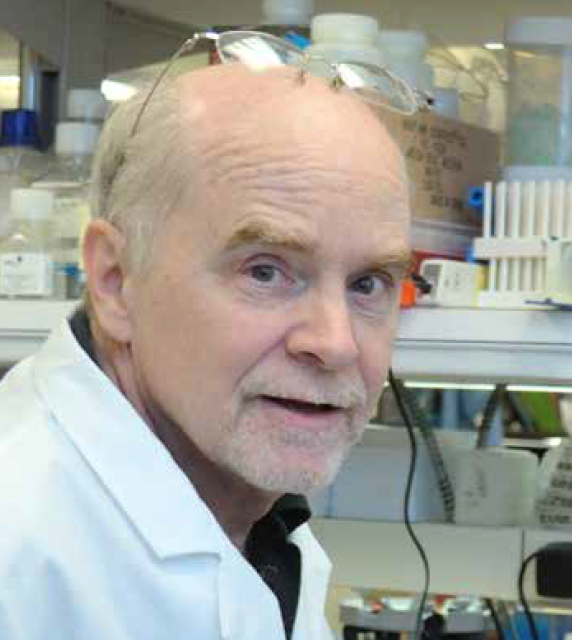Changing the Face of Molecular Medicine
John O’Shea turned his passion for clinical care into a successful research career focusing on understanding the molecular basis of cytokine action, with the aim of providing better treatment options for patients.
Published June 1, 2014
By Diana Friedman
Academy Contributor

John O’Shea, MD, Director, National Institute of Arthritis and Musculoskeletal and Skin Diseases Intramural Research Program, NIH, has pushed the frontiers of molecular medicine during his career through research that has led to new treatments for immune diseases. He was named the 2014 winner of The Ross Prize in Molecular Medicine, which honors researchers whose discoveries change the way medicine is practiced.
How did you get involved in studying immunology?
I was drawn to immunology after admitting a veteran to the hospital, who had vasculitis and, sadly, died of this illness. At the time, the NIH was the center for research on vasculitis, so that’s what ultimately led me to join the NIH for training beyond internal medicine.
I initially worked on complement receptors and then the T cell receptor in my postdoctoral training at the NIH. When I set up my own lab, the importance of tyrosine phosphorylation as a first step in signal transduction was becoming increasingly apparent. We therefore set out to find kinases expressed in lymphocytes and cloned one of the Janus kinases, right around the time it was becoming clear that this family of kinases was critical for cytokines.
Why are cytokines so exciting as a research focus?
Cytokine signaling is of particular interest to me because it is a very basic problem: how cells respond to external cues. What is exciting is that the pathway is an evolutionarily ancient one employed by Dictyostelium and everything from insects to mammals. Advances from all these diverse organisms and models are valuable in understanding the basic problem. Equally, though, these insights often are directly relevant to patients with immune-mediated disease.
What questions are you currently trying to answer?
We remain very interested in how cytokine signals cause cells to grow and differentiate. What that means to us now is how external cues impact epigenetic changes and how this relates to control of gene expression. Of course, “genes” means more than just classical protein coding genes, so we are also interested how microRNAs, lncRNAs, and eRNA are all regulated by cytokines.
We are also interested in how Jak inhibitors do or do not work in patients with autoimmune disease. Will second generation selective inhibitors be as effective and be safer or not? What is the best way to use these new drugs, and for which diseases?
How has the field of molecular immunology changed since you started—and how will it continue to change?

What is most different about doing science now versus a decade or two ago is that today many experiments are set up in a way that the denominator is often the entire genome or products of the entire genome. More and more this will be the case, and as such the analysis of the data becomes increasingly complex. We will be perturbing cells in many of the same ways, but the analysis will be vastly more complex and comprehensive. We will also use single cells and not heterogenous populations of cells, adding yet more complexity to the analysis.
But the basic question we are still trying to answer—how cell behavior is changed by external cues—is not so different from the one we began asking decades ago. What is astonishing is how these questions can now be answered.
How important is collaboration in the field of molecular medicine?
I have had very edifying interactions with industry scientists over the last 20 years with the outcome that patients with rheumatoid arthritis have a new treatment option. These people are experts in making treatments a reality and they are essential to moving the field forward.
Additionally, the NIH has been an extraordinary place to work. From my first experiences, the support from so many colleagues has been astonishing. One really feels like the only limitation to discovery is one’s creativity and ability. It is troubling at a time when so much could be done to really understand basic biological processes and mechanisms of human disease that funding is limited. This is a loss on many levels, but most of all a loss for patients with debilitating diseases.
The other big plus of place like the NIH is the ability to move from very basic problems directly to the bedside and back again. This was a common occurrence during my training—physicianscientists moved from one realm to the other.
Do you think that medical education currently has enough of an emphasis on research?
I worry that at a time like this, when there is so much opportunity, that we are not doing everything we can to foster the development of physician-scientists and translational basic researchers. At the same time, physicians-in-training have so much to learn these days—the amount of knowledge that students in medical school have access to now, and need to absorb, is just astronomical compared to what it was in my day; not to mention there is also the technology they have had to become proficient in using, and complex societal changes that have taken place. So working as a team, with people with different specialties and knowledge sets becomes increasingly important.
What does winning The Ross Prize mean to you?
Being that the prize is focused on molecular medicine, it is very gratifying—this is exactly how I think about myself in terms of my career focus. It’s very humbling, but also very exciting because that’s sort of what I was hoping to accomplish from the start —to make discoveries that are important scientifically, but also directly help people. For me, it doesn’t really get any better than that.
About The Ross Prize in Molecular Medicine
The Ross Prize in Molecular Medicine was established in conjunction with the Feinstein Institute for Medical Research and Molecular Medicine. The Ross Prize recognizes biomedical scientists whose discoveries have changed the way medicine is practiced. The prize is awarded to midcareer scientists who have made a significant impact in the understanding of human disease pathogenesis and/or treatment and who hold significant promise for making even greater contributions to the general field of molecular medicine.
This story originally appeared in the Spring 2014 issue of The New York Academy of Sciences Magazine.
